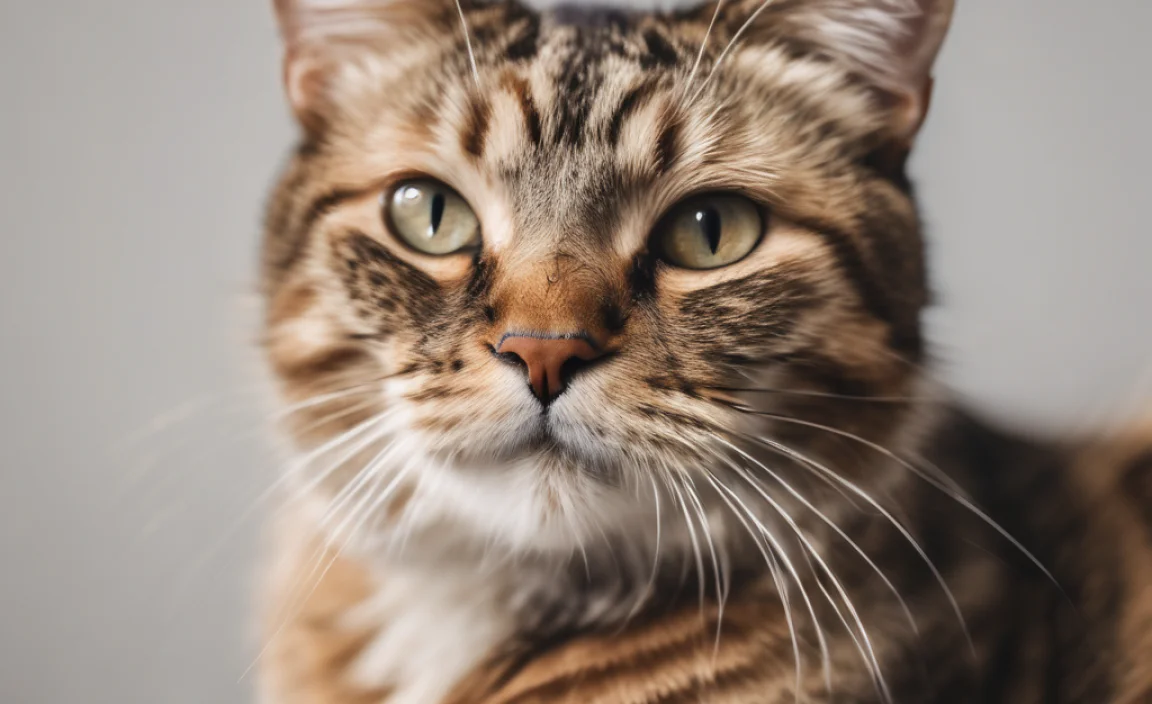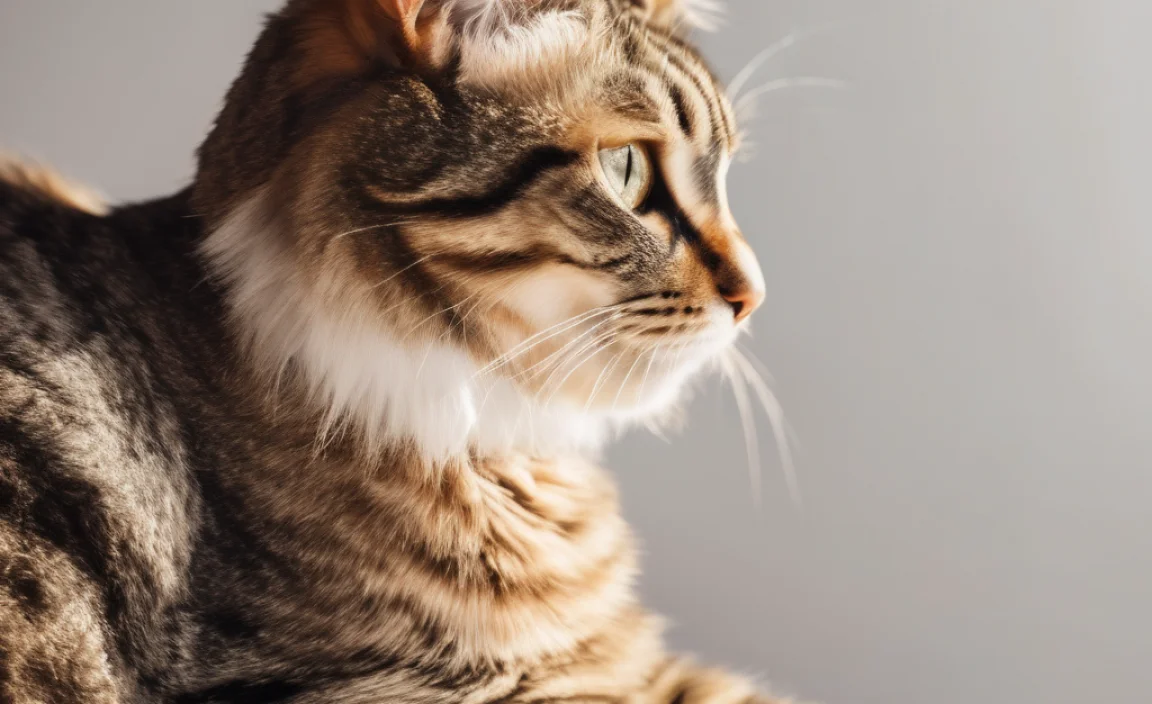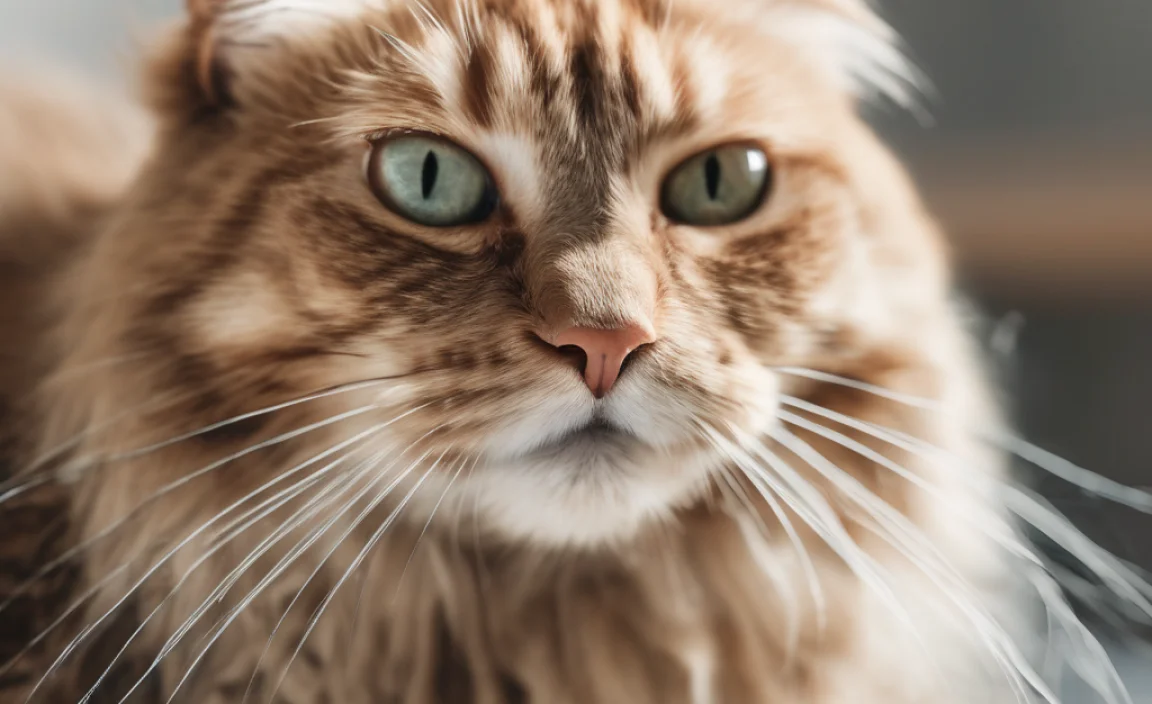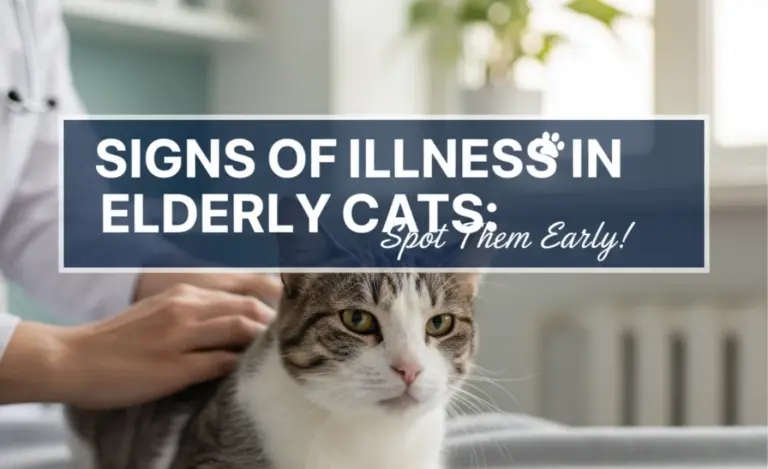Arthritis in Senior Cats: Easiest Way to Help!
**Arthritis in senior cats can be managed through early detection and a combination of veterinary care, home adjustments, and supportive therapies. Look for signs like reluctance to jump, stiffness, or changes in grooming habits. Consult your vet for diagnosis and treatment options, including pain medication, joint supplements, and environmental modifications to improve your cat’s comfort and mobility.**
Arthritis, also known as degenerative joint disease, is a common problem in older cats, especially our beloved British Shorthairs. It can be heartbreaking to see your furry friend struggle with everyday activities like jumping or climbing. But don’t worry! With the right knowledge and care, you can significantly improve your cat’s quality of life and keep them comfortable in their golden years.
In this guide, I’ll walk you through everything you need to know about arthritis in senior cats. We’ll cover how to spot the signs, what your vet can do, and simple changes you can make at home to help your feline companion live a happier, more comfortable life. Let’s get started!
Understanding Arthritis in Senior Cats

Arthritis is a condition that causes inflammation and degeneration of the joints. As cats age, the cartilage that cushions their joints can wear down, leading to pain, stiffness, and reduced mobility. While it’s more common in senior cats, younger cats can also develop arthritis due to injury or genetic predisposition.
What Causes Arthritis in Cats?
Several factors can contribute to the development of arthritis in cats:
* **Age:** The most common cause is simply the wear and tear on joints that comes with age.
* **Genetics:** Some breeds, including British Shorthairs, may be more prone to developing arthritis.
* **Injury:** Past injuries, such as fractures or dislocations, can damage the joints and lead to arthritis later in life.
* **Obesity:** Excess weight puts extra stress on the joints, accelerating cartilage breakdown. According to the Association for Pet Obesity Prevention, approximately 60% of cats in the United States are overweight or obese, increasing their risk for arthritis.
* **Developmental Problems:** Conditions like hip dysplasia can lead to early-onset arthritis.
Recognizing the Signs of Arthritis
Cats are masters at hiding pain, so it’s important to be observant and look for subtle changes in their behavior. Here are some common signs of arthritis in cats:
* **Reduced Activity:** Your cat may be less playful or reluctant to jump, climb stairs, or explore.
* **Stiffness:** You might notice stiffness, especially after resting.
* **Changes in Grooming:** Arthritic cats may have difficulty reaching certain areas, leading to a matted or unkempt coat.
* **Litter Box Issues:** Pain can make it difficult to get in and out of the litter box, leading to accidents outside the box.
* **Irritability:** Your cat may become more irritable or sensitive to touch, especially around affected joints.
* **Hiding:** Some cats may withdraw and hide more often.
* **Changes in Appetite:** Pain can sometimes affect appetite.
* **Altered Sleeping Habits:** Your cat may sleep more or in different locations due to discomfort.
How Vets Diagnose Arthritis
If you suspect your cat has arthritis, it’s essential to consult your veterinarian. They can perform a thorough physical exam and may recommend the following diagnostic tests:
* **Physical Examination:** Your vet will check your cat’s joints for swelling, pain, and reduced range of motion.
* **X-rays:** X-rays can reveal changes in the joints, such as bone spurs or reduced joint space, which are indicative of arthritis.
* **Blood Tests:** Blood tests can help rule out other conditions that may be causing similar symptoms.
* **Joint Fluid Analysis:** In some cases, your vet may collect a sample of joint fluid to check for inflammation or infection.
Managing Arthritis in Senior Cats: A Step-by-Step Guide

Once your cat has been diagnosed with arthritis, there are several steps you can take to manage the condition and improve their quality of life.
Step 1: Veterinary Care and Pain Management
The first step is to work closely with your veterinarian to develop a pain management plan. Here are some common treatments they may recommend:
* **Pain Medication:** Non-steroidal anti-inflammatory drugs (NSAIDs) specifically formulated for cats can help reduce pain and inflammation. Always consult your vet before giving your cat any medication, as some human pain relievers are toxic to cats.
* **Joint Supplements:** Supplements containing glucosamine, chondroitin, and omega-3 fatty acids can help support joint health and reduce inflammation. According to the Cornell Feline Health Center, these supplements are generally safe for cats and may provide some benefit.
* **Other Medications:** In some cases, your vet may recommend other medications, such as gabapentin or amantadine, to help manage pain.
* **Emerging Therapies:** Newer treatments like stem cell therapy and platelet-rich plasma (PRP) therapy are showing promise in managing arthritis in cats, but more research is needed.
Here’s a quick overview of common medications and supplements:
| Treatment | Description | Considerations |
|---|---|---|
| NSAIDs | Reduce pain and inflammation | Prescription only, monitor for side effects |
| Glucosamine/Chondroitin | Supports joint health | Available over-the-counter, takes time to see effects |
| Omega-3 Fatty Acids | Reduces inflammation | Available over-the-counter, choose a fish oil supplement |
| Gabapentin | Pain relief, especially for nerve pain | Prescription only, may cause drowsiness |
Step 2: Home Environment Modifications
Making changes to your cat’s environment can make a big difference in their comfort and mobility. Here are some modifications to consider:
* **Provide Soft Bedding:** Offer your cat comfortable, supportive beds in various locations around the house. Orthopedic beds can be especially helpful for arthritic cats.
* **Elevated Food and Water Bowls:** Raising the food and water bowls can reduce strain on your cat’s neck and joints.
* **Ramps and Steps:** Provide ramps or steps to help your cat access their favorite spots, such as the couch or bed.
* **Litter Box Adjustments:** Use a litter box with low sides or a ramp to make it easier for your cat to get in and out. Place multiple litter boxes around the house, especially on each level.
* **Warmth:** Keep your cat warm, especially in colder months. Provide heated beds or blankets to soothe their joints.
Step 3: Weight Management
Maintaining a healthy weight is crucial for managing arthritis in cats. Excess weight puts extra stress on the joints, exacerbating pain and inflammation.
* **Diet:** Work with your vet to choose a high-quality cat food that is appropriate for your cat’s age, activity level, and health condition.
* **Portion Control:** Measure your cat’s food carefully to avoid overfeeding.
* **Exercise:** Encourage gentle exercise to help your cat maintain muscle mass and joint flexibility. Short, frequent play sessions are ideal.
Step 4: Physical Therapy and Exercise
Physical therapy can help improve your cat’s range of motion, strength, and flexibility. Your veterinarian may recommend working with a certified animal physical therapist. Here are some exercises that may be recommended:
* **Passive Range of Motion Exercises:** Gently move your cat’s joints through their full range of motion to help maintain flexibility.
* **Massage:** Gentle massage can help relieve muscle tension and improve circulation.
* **Low-Impact Activities:** Encourage your cat to engage in low-impact activities, such as walking or playing with toys that don’t require jumping.
Step 5: Alternative Therapies
Some cat owners find that alternative therapies can provide additional relief for their arthritic cats. Here are a few options to consider:
* **Acupuncture:** Acupuncture involves inserting thin needles into specific points on the body to stimulate healing and reduce pain.
* **Laser Therapy:** Laser therapy uses light to stimulate cell growth and reduce inflammation.
* **Chiropractic Care:** Chiropractic care involves adjusting the spine to improve alignment and reduce pain.
**Important Note:** Always consult with your veterinarian before trying any alternative therapies to ensure they are safe and appropriate for your cat.
Step 6: Monitoring and Adjusting the Plan
Arthritis is a progressive condition, so it’s important to monitor your cat’s symptoms and adjust the management plan as needed. Keep a journal to track your cat’s activity level, appetite, and behavior. Share this information with your veterinarian at regular checkups.
Here’s a simple table for tracking your cat’s progress:
| Date | Activity Level | Appetite | Behavior | Notes |
|---|---|---|---|---|
| [Date] | [Description] | [Description] | [Description] | [Any relevant observations] |
| [Date] | [Description] | [Description] | [Description] | [Any relevant observations] |
Living with a Senior Cat with Arthritis: Practical Tips

Caring for a senior cat with arthritis requires patience, understanding, and a willingness to adapt. Here are some practical tips to help you provide the best possible care for your feline companion:
* **Be Patient:** Arthritic cats may move more slowly and be less tolerant of handling. Be patient and avoid rushing them.
* **Provide Gentle Handling:** Handle your cat gently, especially around affected joints. Avoid picking them up unless necessary, and always support their body weight.
* **Maintain a Routine:** Cats thrive on routine, so try to maintain a consistent schedule for feeding, playtime, and rest.
* **Monitor Litter Box Habits:** Keep an eye on your cat’s litter box habits and clean the box frequently to encourage them to use it.
* **Provide Mental Stimulation:** Even though your cat may be less active physically, they still need mental stimulation. Provide puzzle toys, scratching posts, and opportunities to interact with you.
* **Regular Vet Visits:** Schedule regular checkups with your veterinarian to monitor your cat’s condition and adjust the treatment plan as needed.
Frequently Asked Questions (FAQ)
Here are some frequently asked questions about arthritis in senior cats:
**1. Can arthritis be cured in cats?**
Unfortunately, arthritis cannot be cured, but it can be effectively managed with a combination of veterinary care and home modifications to improve your cat’s comfort and quality of life.
**2. What are the first signs of arthritis in cats?**
The first signs often include reduced activity, reluctance to jump, stiffness, changes in grooming habits, and litter box issues.
**3. How can I make my arthritic cat more comfortable?**
Provide soft bedding, elevated food and water bowls, ramps or steps to access favorite spots, and maintain a warm environment. Consult your vet for pain management options.
**4. Are joint supplements safe for cats?**
Yes, joint supplements containing glucosamine, chondroitin, and omega-3 fatty acids are generally safe for cats and may help support joint health. However, always consult your vet before starting any new supplements.
**5. How often should I take my arthritic cat to the vet?**
Regular checkups are essential to monitor your cat’s condition and adjust the treatment plan as needed. Your vet will advise you on the appropriate frequency of visits, but typically, every 6-12 months is recommended, or more often if symptoms worsen.
**6. Can weight loss help with my cat’s arthritis?**
Yes, weight loss can significantly reduce the stress on your cat’s joints and improve their mobility and comfort. Work with your vet to develop a healthy weight management plan.
**7. Is exercise good for cats with arthritis?**
Gentle exercise is beneficial for maintaining muscle mass and joint flexibility. Short, frequent play sessions are ideal. Avoid high-impact activities that could exacerbate pain.
Conclusion
Arthritis in senior cats can be a challenging condition, but with the right care and attention, you can help your feline companion live a comfortable and fulfilling life. By understanding the causes and symptoms of arthritis, working closely with your veterinarian, and making appropriate adjustments to your cat’s environment, you can make a significant difference in their well-being. Remember to be patient, observant, and loving, and your senior cat will continue to bring you joy for many years to come. After all, our British Shorthairs deserve all the love and support we can give them, especially as they navigate their golden years.




